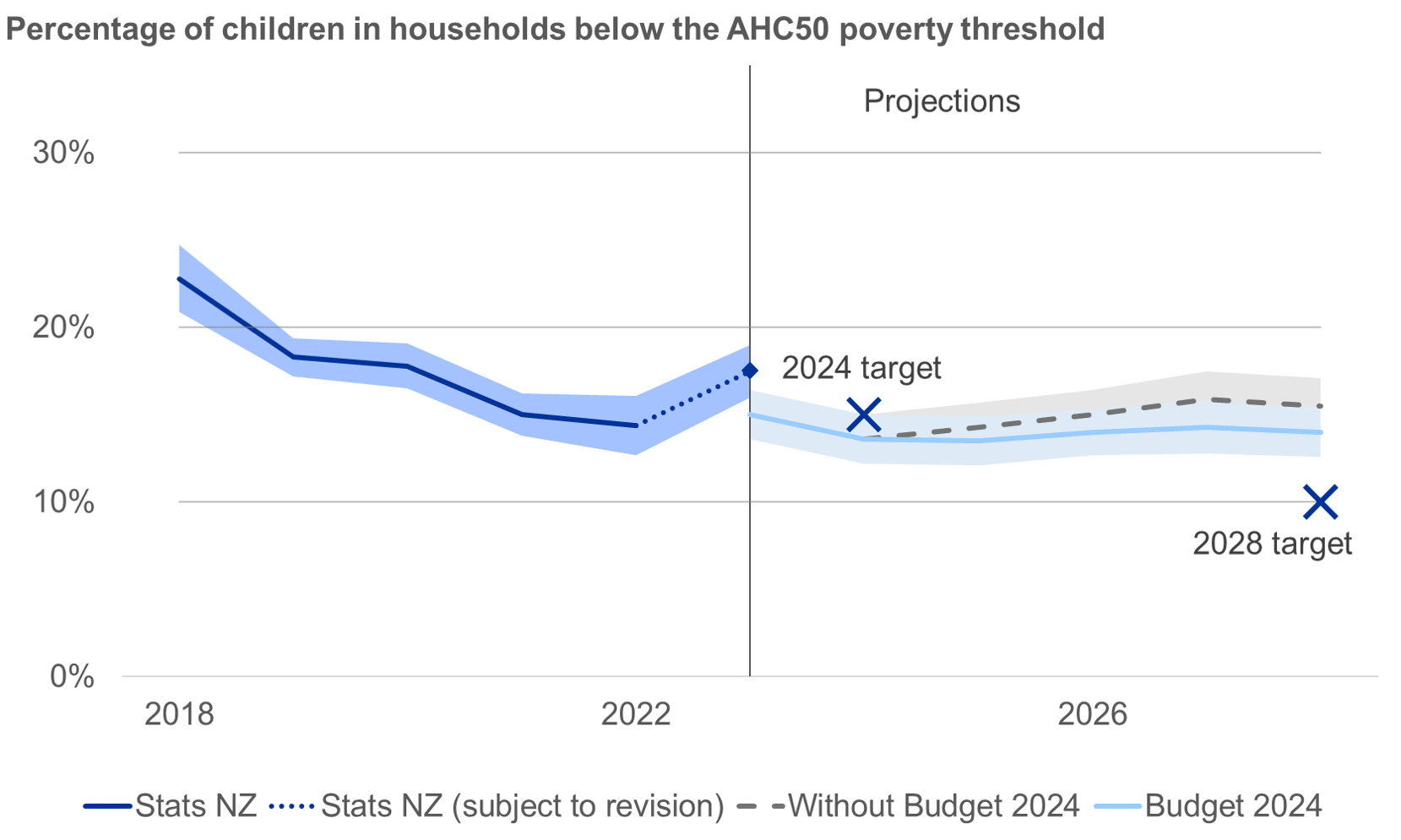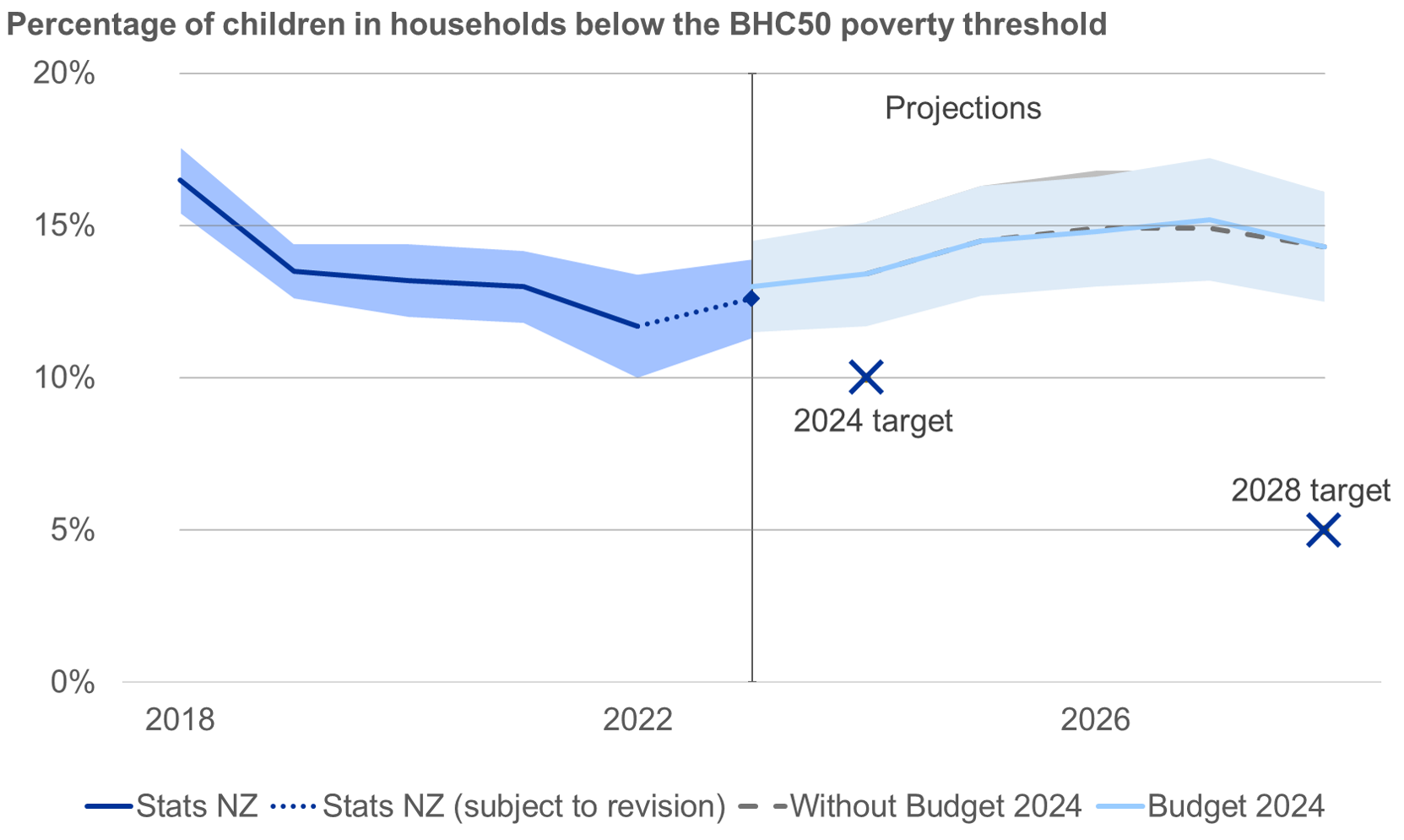Child poverty forecasts
The Treasury forecasts future levels of child poverty on the AHC50 and BHC50 measures, based on economic forecasts and changes in key income-support measures. This modelling involves considerable uncertainty, so future child poverty rates are expressed as a range. The Treasury's model cannot, however, forecast material hardship.
The latest forecasts are shown below, with historical figures included for completeness.[4] The AHC50 chart indicates that the key tax and transfer measures in Budget 2024, as listed in the previous section, are expected to have a positive effect on future child poverty rates. There is no statistically significant impact on the BHC50 measure.
Material hardship
How many households do not have access to the essential items for living?
The Treasury's model cannot estimate material hardship.

After-housing-costs, fixed-line measure (AHC50[5])
How many households have very low incomes relative to previous years, after considering housing costs and increases to the cost of living?
| 2028 | |
| Projection | 14.0 per cent |
| Margin of error | ±1.4 (percentage points) |

The before-housing-cost moving‑line measure (BHC50[5])
How many households have much lower incomes than middle-income households?
| 2028 | |
| Projection | 14.3 per cent |
| Margin of error | ±1.8 (percentage points) |

Notes
- [4] The alignment of benefit indexation to the Consumer Price Index took effect from 1 April 2024, pre-dating Budget 2024. Its effect is therefore illustrated in both the forecast ranges, including the ‘Without Budget 2024’ range.
- [5] The 2023 child poverty statistics from Stats NZ will be revised next year to capture updated Working For Families data, in line with standard practice. More information on why this happens can be found in Stats NZ’s technical appendix to this year’s child poverty statistics data release (https://www.stats.govt.nz/methods/child-poverty-statistics-year-ended-june-2023-technical-appendix/#updates-made). There is a discontinuity between Treasury modelling and Stats NZ's most recently reported child poverty statistics for 2023 because the 2023 statistics will be revised to reflect updated data. The modelled poverty rates presented here have therefore been aligned with updated child poverty statistics from earlier years.